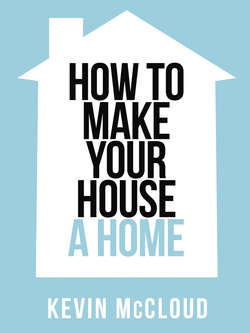Читать книгу Kevin McCloud’s How to Make Your House a Home - Kevin McCloud - Страница 4
ОглавлениеTouch is a much underrated sense. Whether you’re a child in a toyshop or an adult in a china shop, or you’re in bed with your lover, the temptation to touch is too great to resist.
Retailers place the emphasis on the visual: we’re encouraged to look but not touch, and window displays are kept out of reach behind glass. Yet the tactile is fundamental to our full experience of the world around us. If you ask any architect where the money on a project should go, they will tell you that it’s worth investing in 1) the bare bones of the design and a good quality of construction and 2) the things you touch.
So, because you touch them everyday...
I don’t mean this in the way your dowager aunt might in dismissing anything designed after 1915. I mean furniture that is made with love and care. It is probably going to be expensive but it will reward you, I promise, in the fullness of time with a longer life and more use and somehow a livelier character, because you know it well and the factory it came from and maybe even the person who made it, thanks to a little brochure that came with the furniture that you may end up keeping as long as the furniture.
I think of every decently made object I’ve seen or picked up, from lamp posts and bridges to spoons and eggcups, as a physical embodiment of human energy: the magical ability of our species to take raw materials and turn them into things of use, value and beauty.
The action of something like a light switch should not only feel crisp and easy, it should feel the same way thousands of uses later. This is down to the quality of the components and the quality of the assembly. In the case of lighting, we’re used nowadays to being able to buy a bedside lamp for around £5 in a DIY store. But because it’s cheap, that doesn’t mean to say it’s disposable or planet-light. The environmental impact of lighting is heavy, because each fixture comprises many components from many materials that have travelled many thousands of miles before being assembled. The average bedside lamp might contain five separate types of plastic, a spun aluminium shade, brass and steel components, PVC cabling, copper wire, silicone gaskets, rubber sheathing, ceramic lampholder and fuse; and, in the bulb, rare gases, glass, tungsten or rare metal phosphors, mercury, electronic components and a circuit board.
